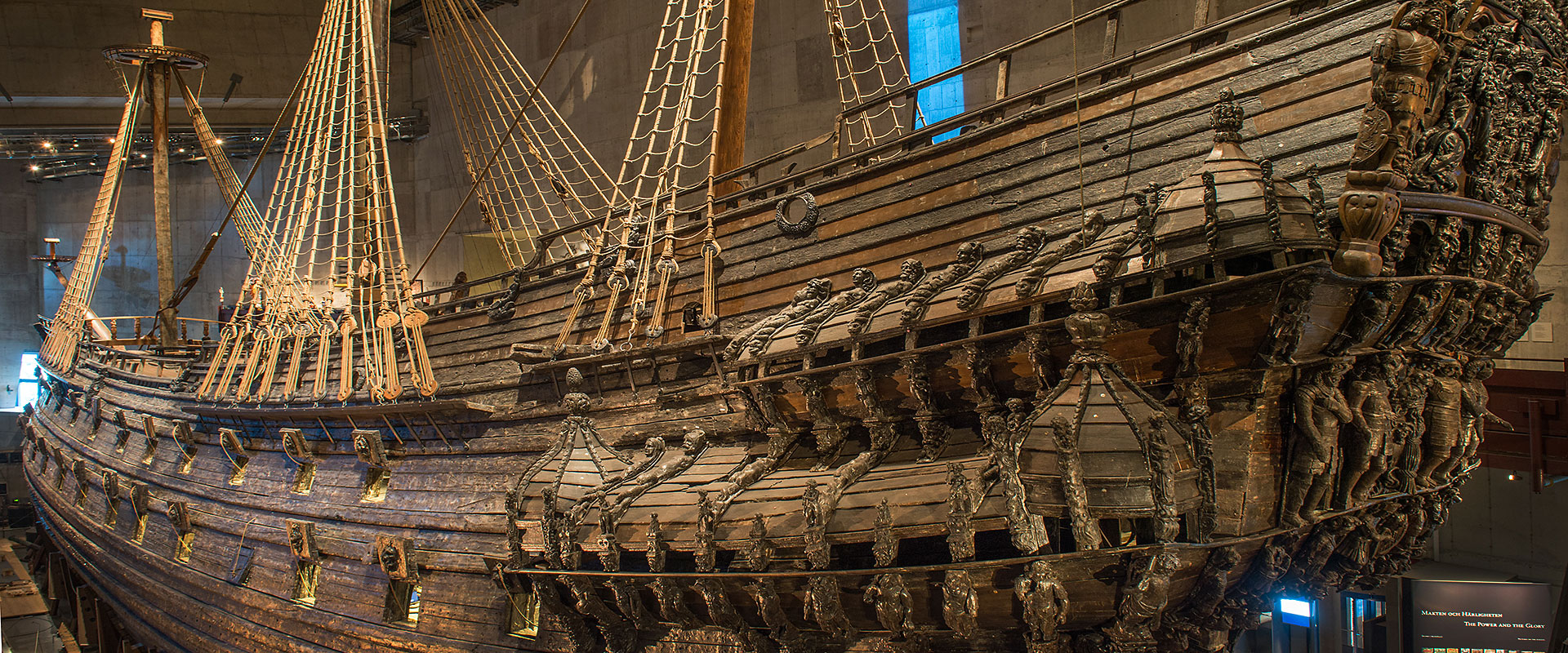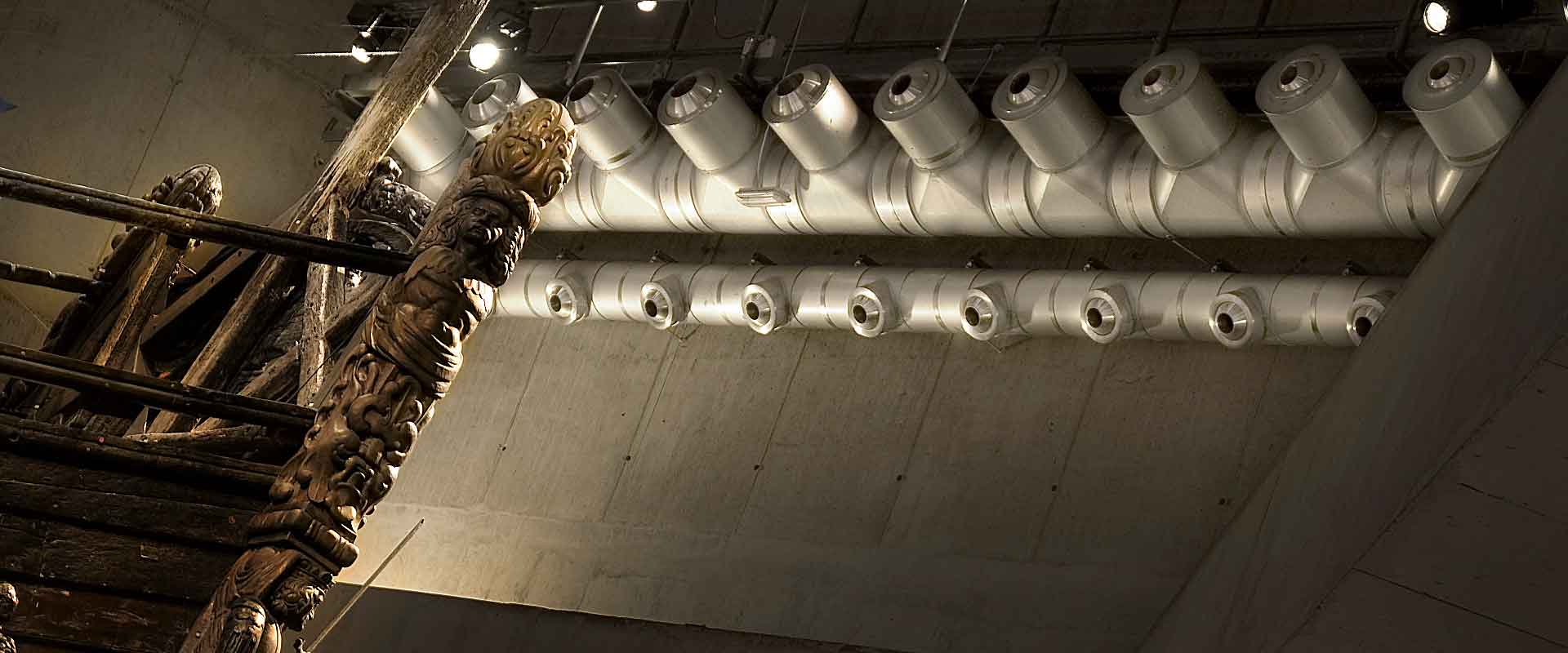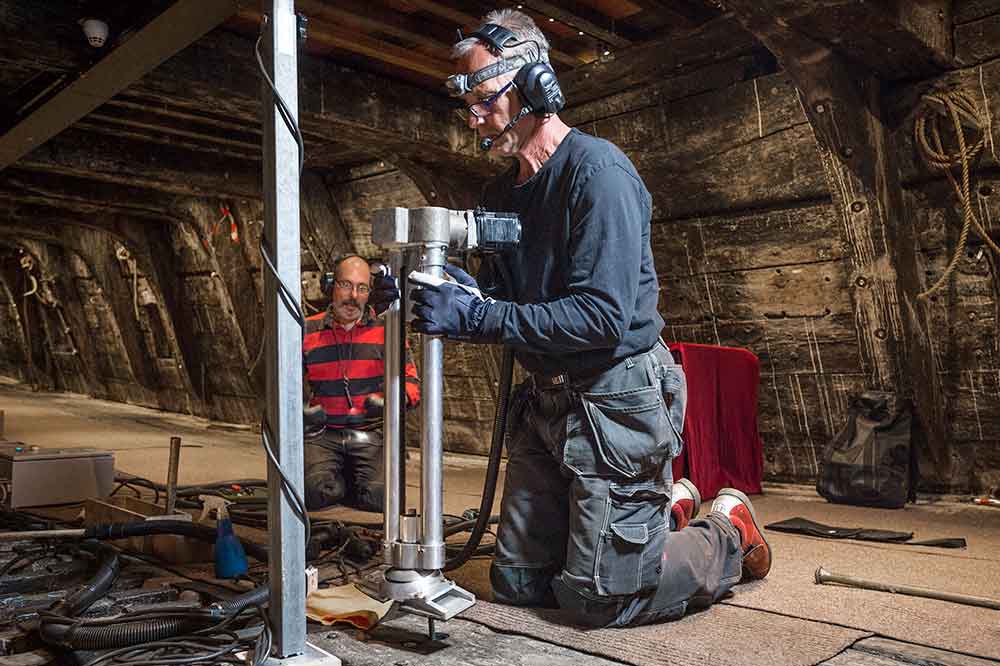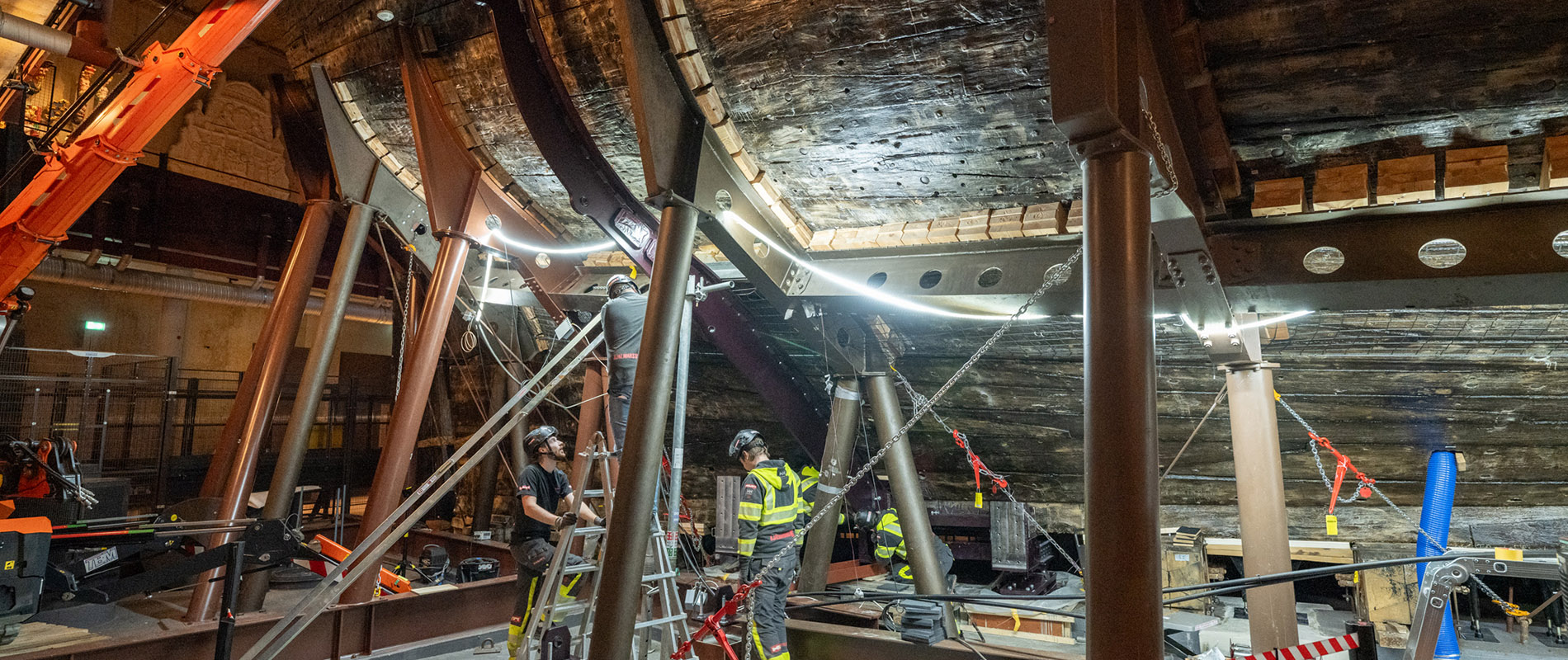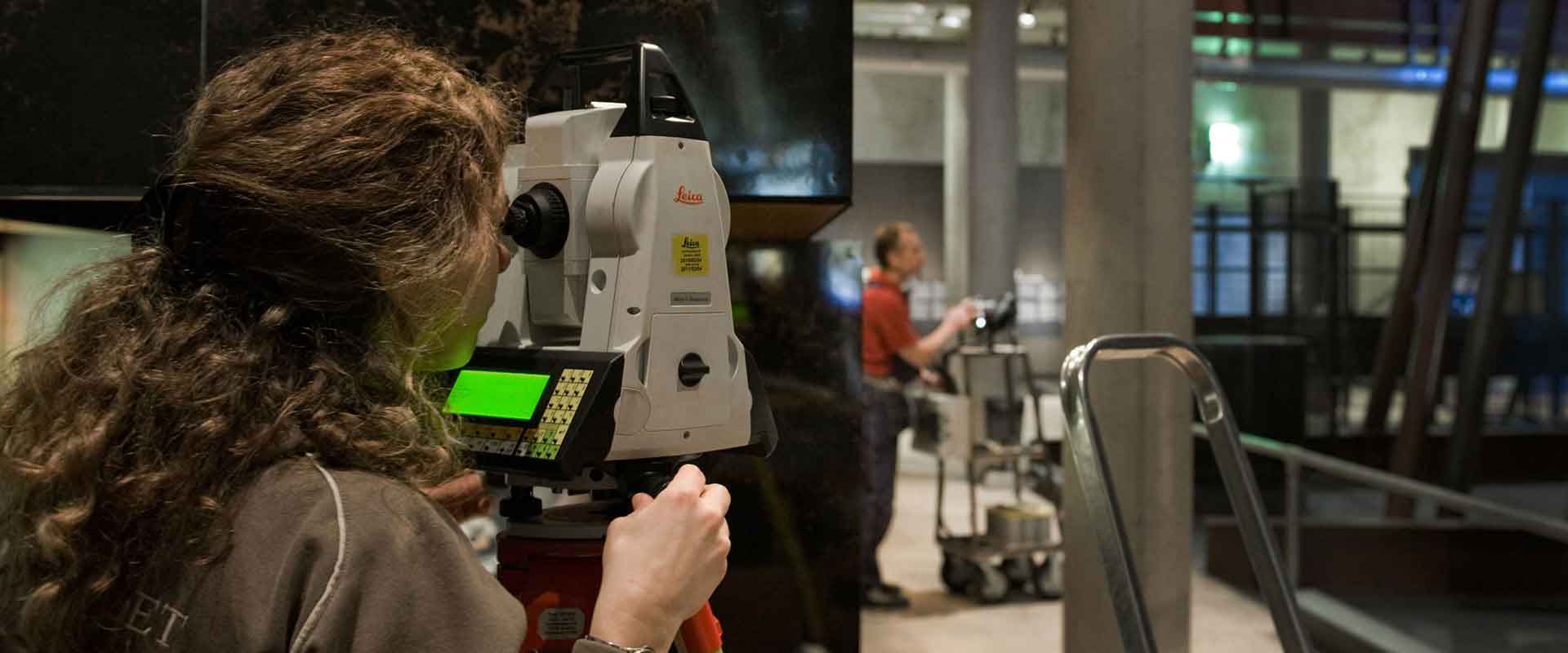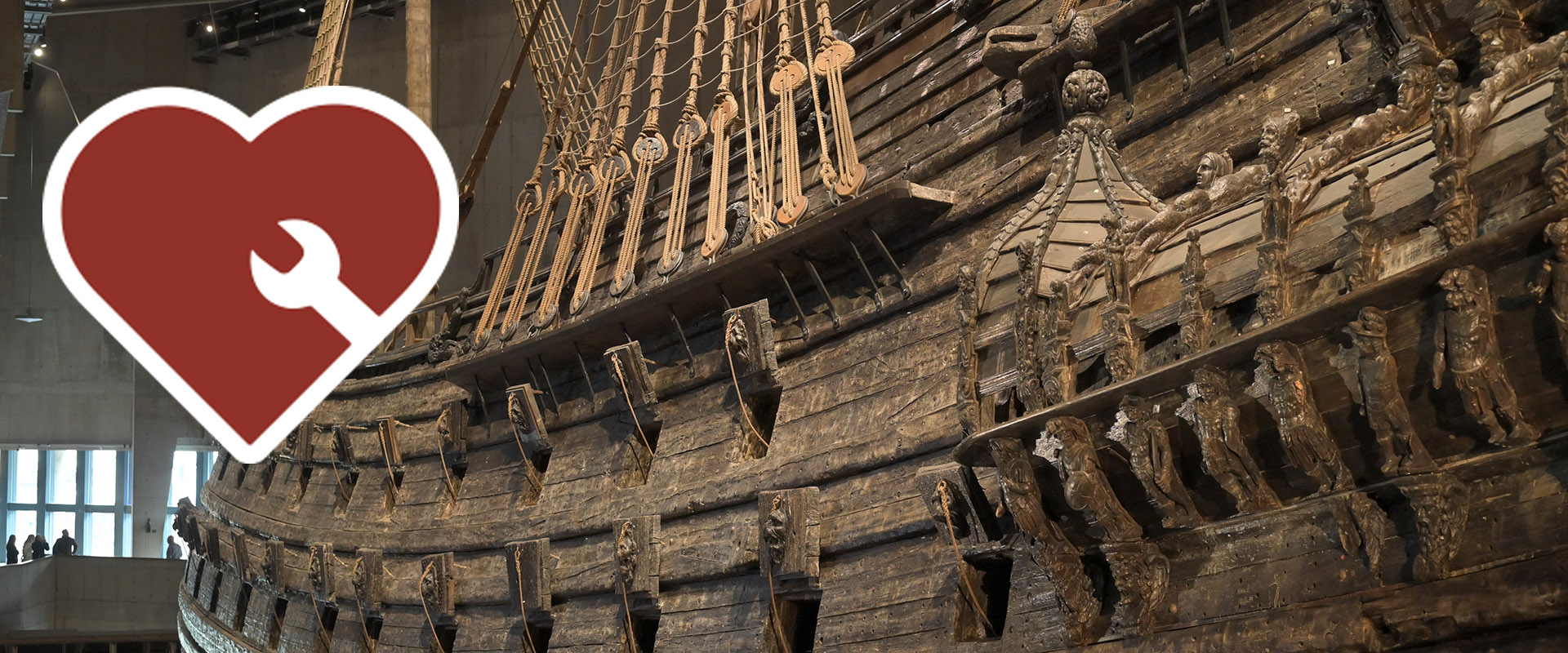From surface flecks to weakened interior. More than a decade of cross-disciplinary research is strengthening our understanding of what is going on inside Vasa's wood.
The first visible signs
When The Vasa Museum opened in 1990, the conservation of the ship and the tens of thousands of objects was considered to be finished. But over the following decade, signs of unexpected changes in Vasa's wood appeared as white and yellow flecks on the surface of the ship and the wooden objects. The precipitates were identified as sulphur and iron compounds with high acidity, and signalled that degradation reactions were affecting Vasa's wood. Since then, cross-disciplinary research on Vasa's wood has been taking place in order to improve the conditions for the long-term preservation of Vasa.
Changes below the surface
Initially focusing on the visible symptoms, the research was gradually directed towards conditions and causes below the surface, where the strength of the wood in places was discovered to be severely reduced. What degradation processes are at work, how fast are they proceeding, what are the short and long-term consequences, and what measures can be taken to tackle them?
Tackling degradation on many fronts
Controlling museum climate
One of the first and noticeably most important measures taken was the upgrading of the climate-control system in 2004. Stabilising humidity and temperature has meant a stabilisation of both structural and chemical changes in the ship. Many of the seasonal movements and deformations of the ship have been reduced, as has the development of the surface precipitates.
Improving Vasa's support
How the chemistry of Vasa's wood affects its strength is of crucial importance for the complex and heavy structure of the ship. Wood chemists and mechanical engineers have identified chemical changes in Vasa's wood over time, which have resulted in weakening of the wood's strength. The need for an improved support of the ship is clear. In the project Support Vasa a knowledge base has been gathered to impact the construction of a new support system for Vasa.
Removing iron from Vasa's wood
Vasa's wood is contaminated with iron from the thousands of bolts, nails, cannon balls and other iron objects, which corroded during the time on the harbour bottom. Iron is a well-known catalyst in chemical reactions and clear correlations between high iron content, high acidity and reduced strength have been shown in Vasa's wood. We have therefore made trials of removing iron from smaller wooden objects that can withstand retreatment. As for the enormous and complex structure of the ship, which cannot easily be retreated, preventive measures, such as controlled climate and improved support, are needed.
The Support Vasa project
Vasa has been resting in the same support cradle since its salvage in 1961. The museum’s carpenters have long noted deformations in the hull, and regular measurements show that there are movements in the ship's wood. Vasa therefore needs a new and more appropriate support. Between 2012 and 2020, a lot of data was collected and a knowledge base was built in order to design the new support structure that will help maintain the ship’s shape and minimise movement and the risk of crack formation.
The research project, conducted between 2012 and 2017, was called Support Vasa. In 2018, work began to design the new support structure. In 2024, work began to install the new support structure. The aim is for it to be complete by 2028, just in time for the ship’s 400th anniversary.
Because of work on board the carpenters at the Vasa Museum had to move the deck planks - they have not been moved for hundreds of years.
For English subtitles, press "CC" and choose "English".
For English subtitles : press " CC" and select " English".
For English subtitles : press " CC" and select " English".
